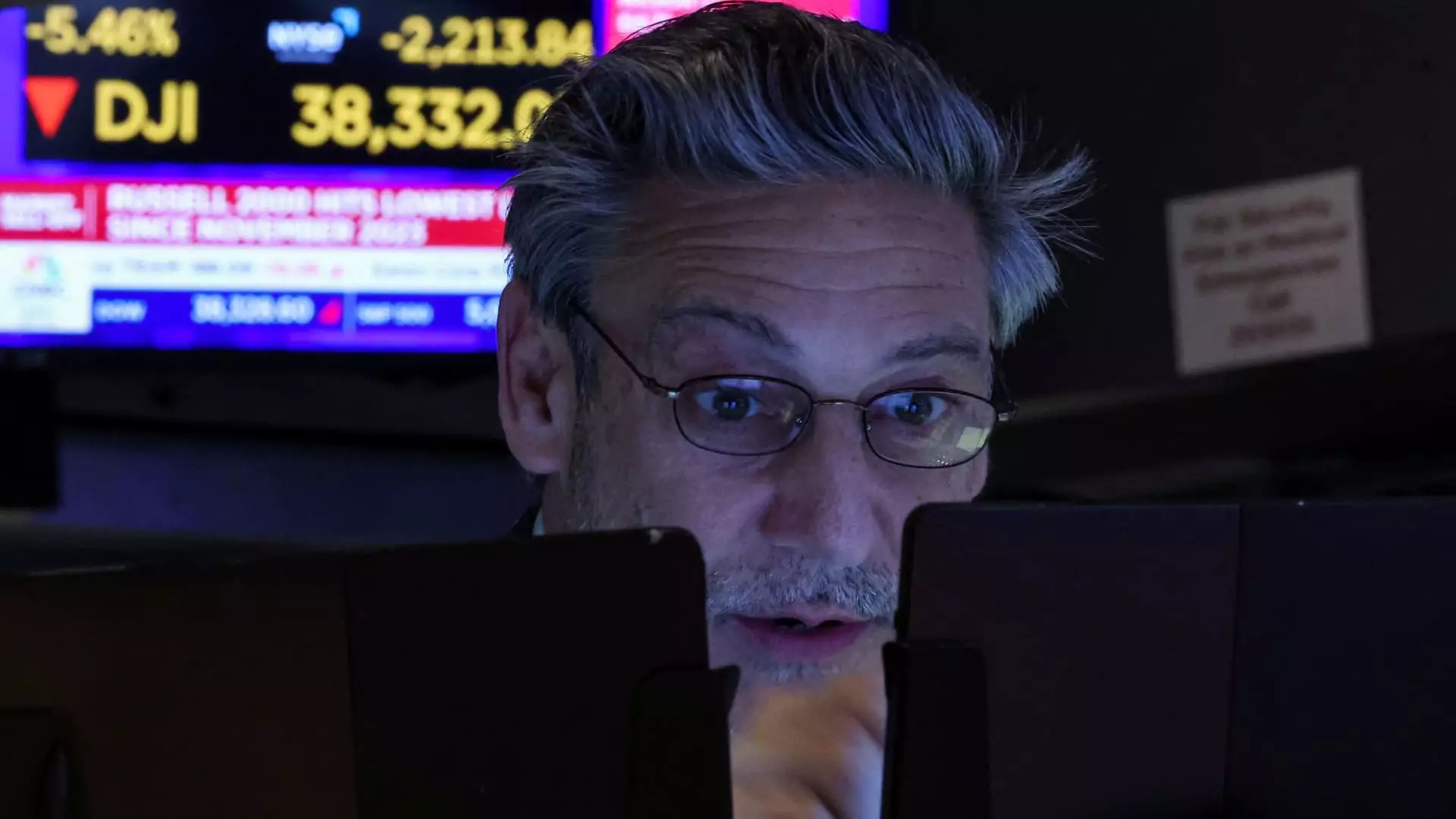In the world of finance, swift market movements can either herald opportunity or doom. The recent plunges in stock prices and futures force us to confront the unsettling reality that our market systems, while robust, can be incredibly fragile. Trading halts serve a vital function in preventing catastrophic market crashes by allowing traders to take a breather and assess their strategies. However, the fact that we frequently need these pauses prompts questions about the integrity of our financial structure. The events of fall 2020, when COVID-19 wreaked havoc on global markets, serve as a stark reminder of how quickly the ground can shift beneath our feet.
Now, with the specter of an economic downturn looming due to rising trade anxieties exacerbated by President Trump’s controversial tariffs, the pressure on equities has grown more palpable than ever. The alarming behavior of equity futures, especially those linked to the S&P 500, sheds light on the precarious nature of our stock market. Could these fluctuations be a signal: it’s time for investors to reconsider their positions?
The Circuit Breaker: A Temporary Fix or a Sign of Systemic Issues?
When assessing the recent trading turbulence, it’s essential to decode the circuit breaker mechanism as a double-edged sword. While it offers a necessary pause, allowing humanity to reenter a system driven by data and numbers, it also reveals vulnerabilities within the market itself. The circuit breaker system operates on three distinct levels, triggered by declines in the S&P 500, and while they were enacted to prevent panic and subsequent sell-offs, they also raise concerns about our market fundamentals.
The first-level breaker, activated when the S&P 500 drops by 7%, prompts a 15-minute administrative timeout. However, if it occurs after a certain timeframe in the trading day, the response may be inadequate to provide real relief. The deeper societal issue is why such drastic measures exist at all. Are we in a cyclical phase of economic malaise, or does this represent an inherent flaw in our financial architecture? This uncertainty should send shivers down any investor’s spine, prompting urgent discussions about reforms.
Market Performance: A Grimmer Picture Emerging
As we dissect the implications of these trading halts, we must also take a long, hard look at the accompanying market performance. The figures tell a story steeped in drama: the S&P 500, which lost nearly 6% in just one session, mirrors the volatility we might typically reserve for high-stakes gambling rather than serious investment. The statistical progressions are staggering; the Dow Jones Industrial Average and Nasdaq Composite also followed suit, with declines that evoke the specter of a bear market.
In fact, taking a wider view of the Dow’s plunge of 6.9% and the Nasdaq’s fall into bear territory suggests a collective anxiety pervasive throughout the market. As each index flounders, it’s hard to ignore the alarming signs—downward trajectories scream for intervention, offering little in the way of reassurance to long-term stakeholders who have their livelihoods riding on these exchanges.
The Reality Check: What Lies Ahead?
We are left questioning the course of action for responsible investors in the face of such chaos. If the past years taught us anything, it’s that the market moves in cycles, but can we afford to be optimistic this time around? While some assert the market will bounce back—as it often has—others insist that such patterns may not be sustainable given the current geopolitical climate and trade policies.
Investors must be wary of complacency as we navigate through these turbulent times. Hope should not be mistaken for strategy. Should we expect a recovery, or are we looking at a protracted downturn exacerbated by volatile trade decisions and global instability? The evidence suggests that the latter might be more probable, and it’s incumbent upon us as investors to guard our interests vigilantly.
The result? A looming crisis that has caught the attention of not just financial experts, but individuals who may have never before felt the weight of such uncertainty. The nature of the stock market is as fragile as it is resilient, but as we stare into awash of red numbers, it’s crucial that we understand the depth of this financial quagmire.

